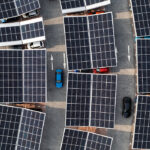Tyson Foods cut greenhouse gas intensity by 5% and decreased Scope 2 emissions by 380,000 metric tons of CO2e in FY2019 and reported their sustainability successes in their newly released 2019 Sustainability Report.
The food company previously set a goal to reduce greenhouse gas emissions 30% between 2016 and 2030, a target which was approved by the Science Based Targets initiative in 2018.
In pursuit of this goal, the company has joined initiatives such as the DOE Better Buildings, Better Plants program and this year began the process of reforecasing their emissions footprint in line with their expanding business growth. They have taken actions to reduce energy use that include the installation of a heat pump water heater and thermal energy recycling system at a facility in China that has saved 705,000 kWh a year and the LED retrofit of a plant in the Netherlands that has reduced the associated electricity cost by 90%.
“Our world has changed greatly as we have all faced the COVID-19 pandemic—together. Now more than ever, the one constant is for companies of our size to provide the world with good food; we at Tyson Foods hold ourselves accountable to do our part,” Noel White, Tyson Foods’ CEO, in a statement. “Our commitments are unwavering—to keep our people safe, be good stewards of animals and resources and advance sustainability to serve our customers.”
In 2019, Tyson Foods’ greenhouse gas intensity dropped from 0.19 to 0.18 and Scope 2 emissions fell from 2.63 million to 2.25 million metric tons of CO2, despite Scope 1 emission’s increase from 3.22 million to 3.48 million metric tons.
Tyson also implemented biogas projects at seven of their plants that create gas for use at four of those plants. These projects reduce their greenhouse gas emissions by more than 23,000 metric tons of CO2e every year.
NULL




